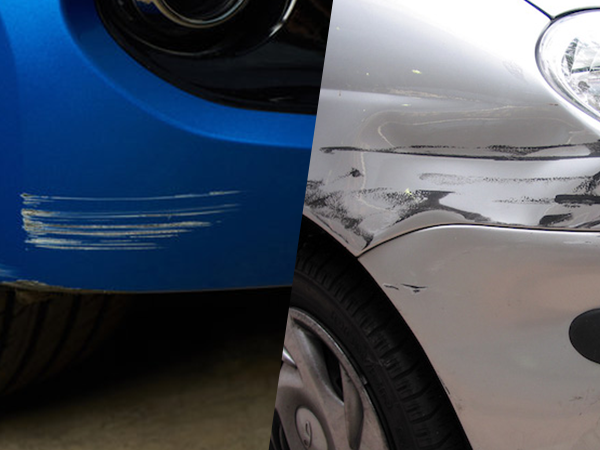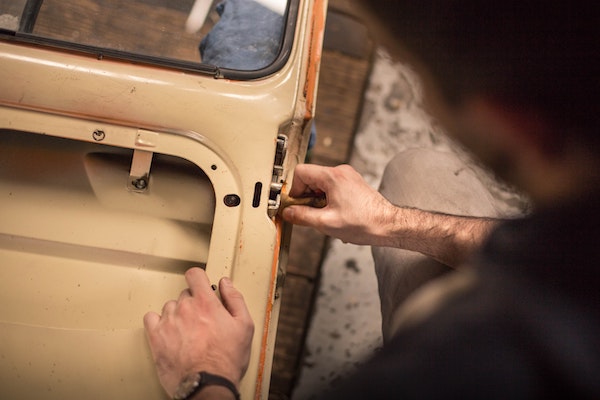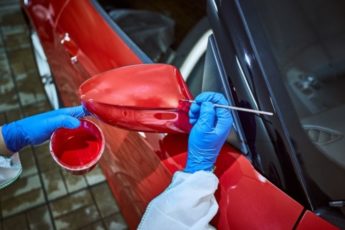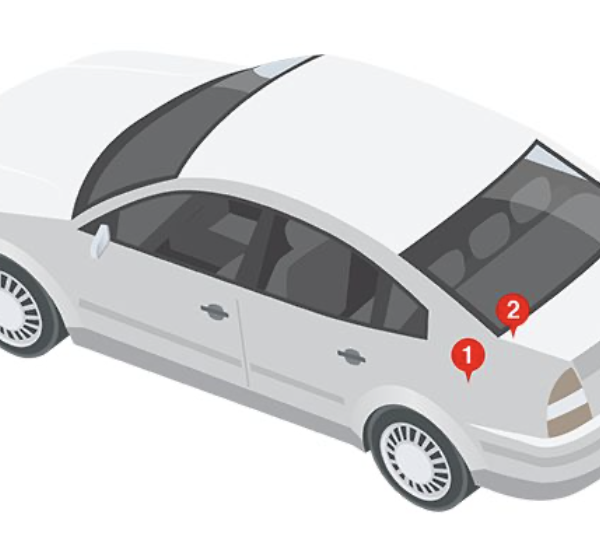When Do You Need to Go to a Body Shop?

We love a good touch up paint. It covers all manner of things from a bird desecrating your beautiful paint job to a vengeful ex keying your car. But sometimes, and we are loathe to admit it, all the touch up paint in the world cannot fix what has happened to your beloved vehicle. So what happens if your car meets with an unfortunate accident? How do you know when to touch up and when to take your car to the professionals? How much will it cost once it gets to the body shop or the garage? TouchUpDirect’s got you covered!

What Can Be Fixed At Home?
Let’s start with the obvious! What do you do with a scratch on your car’s coat? First you need to determine how superficial your scratch is. Check if there are pits, gouges, or deep scratches. If that’s the case, you’ll need to fill the gaps with Scratch & Chip Putty. If you can see bare metal or plastic, you will need to lay down a layer of Primer before you start your touch up job. If not, you’re good to go with Colorcoat and Clearcoat. With the Colorcoat laid down first, apply 2 to 3 coats of each to the damaged area. For more detailed instructions, please visit our help center. If it’s not even a scratch, simply a scuff, things will be much easier. Scuffs are simply the little marks left on your car’s coat when it bumps into something else. So to be rid of them, you will need a microfiber cloth and polishing compound to remove it. You may sometimes need to check the extent of the damage to see if you can do a DIY fix. For instance, if something cracks your windshield, there are some steps you can take at home. However, this trick will only work with cracks in your windshield that are smaller than a quarter. Purchase a windshield chip repair kit. These kits often come with epoxy resin to be applied to the crack and a UV light to cure it. In some cases, you should take it to a repair shop or garage even if you have the ability to fix it up yourself. For instance, you can repair a punctured tire at home with a variety of methods ranging from adhesives to tire sealants. But for this, we would recommend taking it to a professional. It shouldn’t cost more than $40. We also can’t advise that you pop out small dents with a hair dryer but instructions for it exist on the internet if you don’t want to pay $100 to have someone do it for you.

What To Do With Heavy Damage
Let’s be honest, it’s likely that you’ll know when you need to go to a body shop. If a huge part of a car has been crushed, the average driver does not say “I bet I can sort that out at home.” So here, we’re really going to examine how much the more serious damage can cost and how you know what’s safe to drive. But first, let’s tackle what happens when your car frame is damaged. This substructure supports the rest of the car and offers some protection to the driver if an accident occurs. Frame damage is serious as it affects the rest of the car and should be taken to a professional immediately. As it is your car’s skeleton, it may be a little more difficult to identify damage. Weird noises, small parts falling out, and wheel alignment are all signs that something’s wrong. Experts suggest driving your car in a straight line as a test. If you have trouble doing this, it’s likely that your frame has been impaired. How much it costs to fix the frame depends on the extent of the damage. The price could range anywhere from $600 to $10,000. Steering difficulty could also be an indication that your axles are damaged. The mechanism that connects wheels together, an axle is the conduit between the wheels and the transmission that makes your car go. Its position means that the warning signs could be anything from leaking oil to loud noises to faulty brakes. The price for getting a broken axle fixed ranges from around $100 to $1000.
If it’s determined that your car is beyond help, there are a number of options. If you have collision insurance, the company will likely take away your vehicle for examination to make sure that it is completely totaled. At what point is your vehicle so damaged that it is considered, to use automotive parlance, “a total loss”. It varies but generally, the car is considered a total loss if the amount that would be needed to fix it matches or exceeds the value of the car (ACV). If the insurance company finds that your car is “a total loss”, they’ll pay you the ACV. If you want your totaled car returned, you can attempt to buy it back from them. Returning it to the road will be a little more difficult as a car deemed totaled will need to undergo inspections and tests to make sure that it is safe for the road. You also have the option of selling the car for salvage. This requires applying for a salvage certificate at the DMV. Finally, there are many charities that take cars, totalled or not. Most will tow away your car for free and sell the parts to help their causes.

 Cart
Cart
 Help Desk
Help Desk






